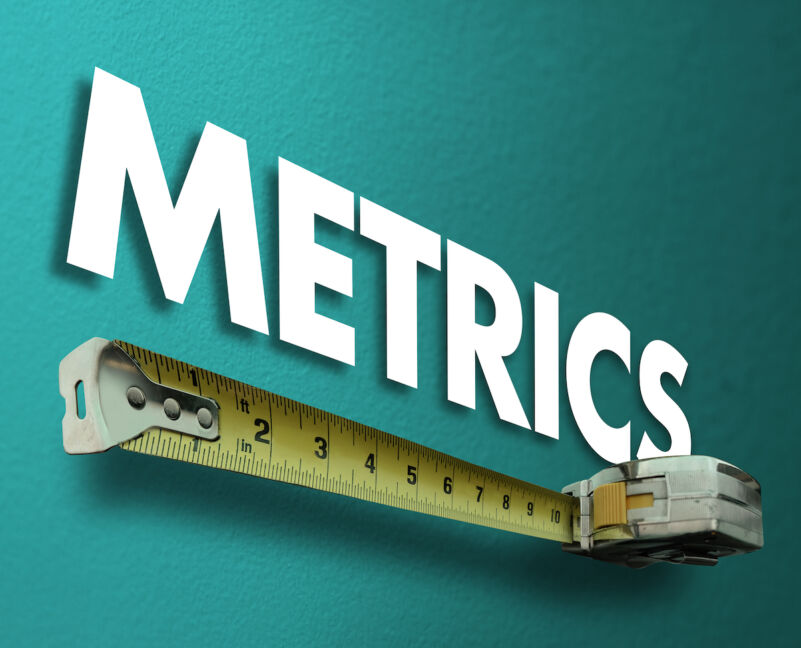Uncertainty continues. Only this week, the markets have been spooked by the collapse of SVB Bank and Credit Suisse. Fears of economic contagion are rife. On the one hand, it looks as if we’re going to avoid a recession; on the other, inflation is staying stubbornly high. Speaking to our clients, many are experiencing a softening in their marketplaces. Opportunities are there, but they’re harder to close.
At times like this, getting back to fundamentals and tracking the right metrics is essential. Only then can you make an informed plan. Often, clients are measuring things they’ve always measured without knowing why. The easy things. They’ll spout statistics proudly, but many of them are meaningless. We tell them they must focus on the stuff that makes a difference, even if it’s complicated.
We recommend measuring specific metrics now as they will make it easier to navigate the choppy waters ahead. So what are they?
Cash flow
Whenever there’s uncertainty, I immediately ask clients about their cash flow. ‘How many days to death?’ This language might sound stark, but it’s deliberate. Bill Gates ran Microsoft with 12 months of operating expenses in the bank. We’ve worked with clients running on zero, with some scary moments. One of our clients nearly lost everything in the 2008 financial crash. Since then, they’ve always run their business with at least six months of cash in the bank. They never want to be in that position again.

It might be prudent to put your business on a war footing. Your Finance team need to get good at giving regular, direct forecasts. Their measure of success is not that they’re doing this but that their reporting is accurate and useful. Get laser-focused on maintaining your business at the current level and not letting it slip backwards.
Profit by customer and product
Do you know which of your customers or products are more profitable? It staggers me how many CEOs don’t. And do you know how much free cash flow these customers are generating? And what you spend this cash on (or not)? All of this needs to be tracked.
This is important because growth sucks cash. Several clients have found that, as they go upmarket and start servicing bigger customers, the terms of the contracts are worse, and profitability starts to dip. They’re growing broke, which can store up a whole heap of problems in the future.
Get laser-focused on profitability by customer to help you judge future deals. The last thing you need in a time of economic uncertainty is to lose margin. And this information will help you form a plan for any customers or products that are unprofitable.
Return on investment
Too often, clients tell us they’re not making a profit because they’re investing. I ask them, ‘OK – so what’s your return on that investment?’ and I’m met with blank faces. They don’t know because they’re not tracking it.
It’s worth reading a couple of books by Greg Crabtree here – ‘Simple Numbers’ and ‘Simple Numbers 2.0.’ I interviewed him for my Melting Pot podcast back in August 2021. Greg says that most companies invest in their growth out of cash flow. He calls it growth capital. But it needs to be reported regularly and clearly in your accounts.
Often, people don’t know when to stop investing because there’s no reporting. They have several experiments running in parallel without a sense of whether they generate a return. ROI should be at least 50% or more as a target. Any less, and warning bells should ring.
Customer Acquisition Cost (CAC)
In times of economic contraction, your budgets need to work harder for you. Particularly your marketing budget. Perhaps you’re planning to grow your revenue by a certain percentage. But where’s the data to show where this growth will come from? Will it be generated by existing clients or net new logos? And how much is it going to cost to acquire these new customers?
You need to work out your Customer Acquisition Cost. To calculate it, total your sales and marketing expenditure, including salaries, bonuses and overheads over a given time period. Then divide this by the number of new customers you gained during the same period. So, if you spent £300,000 on Sales and Marketing in a year and added 30 customers, your CAC is £10,000. Then track this over time.
In the past, when I was MD of Rackspace and Peer 1, the best we could achieve was getting 50 cents back from every dollar we spent. So it would take us two months to recover any marketing spend at a revenue level.
Work out what you’re trying to drive regarding new logo revenue, what you’re spending to get there and how this compares to your competitors. I was looking at a report recently that said if you’re not number one in your marketplace, you will need to outspend your competitors thrice to beat them in a straight fight. That’s a considerable amount.
You may decide to define your customer segment and positioning differently from your competitors so that you’re not going head to head. Let’s say you’re a milkshake manufacturer. Is your customer the vendor that sells your milkshakes or the end consumer who drinks them? Perhaps your competitors target the end user by driving sales through branding and TV work. So you decide to be different. You target the vendors by making it easier and more profitable for them to do business with you. These types of informed decisions come from tracking the right metrics.
Customer Life Time Value (LTV)
Once you’ve worked out the acquisition cost, you need to look at the payback of these new customers – this is where LTV (Life Time Value) comes in. For fixed-term contracts, this is straightforward. But if you don’t know how long you will retain them, determine how much revenue you can expect in a certain period. Then subtract out the gross margin and divide this by your estimated churn percentage for that type of customer over the same period. Still with me?
So, for a type of customer who pays you £100,000 per year where your gross margin on the revenue is 70%, and that customer type is predicted to cancel at a rate of 16% per year, then the LTV is £437,500 (70,000 divided by 16%).
Work out the customer LTV and track whether it’s going up or down. Maybe it’s changing in cohorts? Let’s say you signed up some customers in 2020/21 – work out what happens over time. Has the churn rate changed? Quite often, you’ll look at customer data, and, on the surface, it appears they’re growing fast. But when you dig into the data historically, customers signed three years ago would grow to 1.5x bigger. But now it’s tracking at 1.2x. So the customer growth rate is slowing even though your revenue is increasing.
Conversion and growth rate
CAC and CLTV are both conversion rates. I like working through the customer buying journey and determining the conversion rate at each step. Identify leading indicators – how many meetings are being booked, how many proposals are being sent out etc. The more you can track this information, the better your plan for future growth.
Finally, apply relentless focus to your growth rate, year over year, month over month and quarter over quarter. Split revenue into existing customer cohorts, types of customer, and profitability rates, and get interested in exactly where your growth is coming from. Don’t kid yourself that your growth is excellent if it’s coming from existing customers. You might start losing your ability to win new revenue in your marketplace. That is never a good thing.
Written by business coach and leadership coaching expert Dominic Monkhouse. You can order your free copy of his book, Mind Your F**king Business here.

